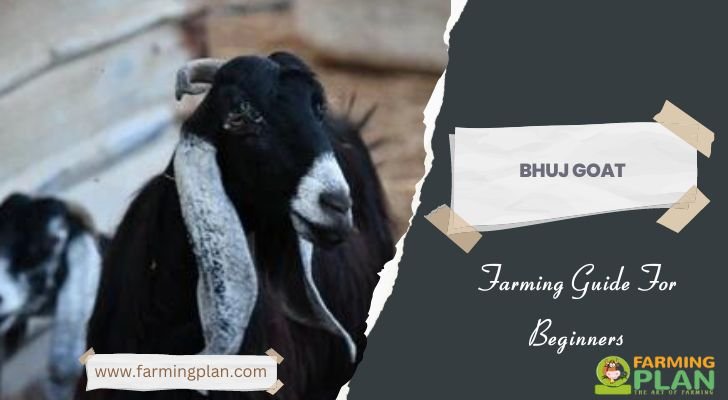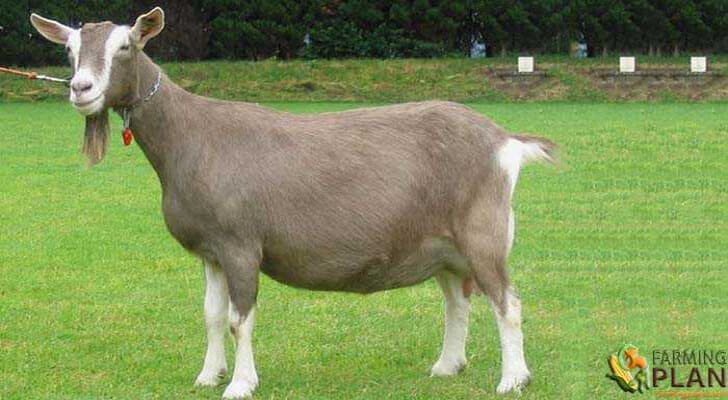Are you interested in learning about the wonderful world of Bhuj Goat farming? If so, then you have come to the right place! Here, we will guide you through everything that aspiring farmers need to know about raising and caring for a Bhuj goat.Native to northeastern Brazil, the Bhuj goat is a highly sought after breed due to its ability to produce both delicious meat and richer-tasting milk than other breeds. Taking into account their superior resistance towards disease and adaptability in hot climes, this high value dairy goat should undoubtedly be taken seriously if one intends on getting into real smallholder farming. With that being said, let’s explore how get started with this fantastic breed!

History & Origin
The Bhuj Goat, also known as Kutchi or desert goat, is a breed that is native to the Kutch region of Gujarat, India. It is a hardy breed, well-adapted to the harsh desert climate, and is often used for meat and milk production. The history and origin of the Bhuj Goat are shrouded in mystery, with some theories suggesting that they were brought to the region by nomadic tribes, while others claim that they have been present in the area for thousands of years. Despite the unknown history, the Bhuj Goat remains an integral part of the rural communities in Kutch, and efforts are underway to preserve and promote this unique breed.
Characteristics
The Bhuj goat is truly a unique and fascinating breed of goat. With its distinctive characteristics, it is hard not to be captivated by this majestic animal. These goats are known for their long, curved horns that are impressive to behold. They have short hair that comes in a variety of colors, from pure white to black, as well as shades of grey and brown. The Bhuj goat is a hardy breed and can tolerate extreme temperatures, making it well-suited for living in rugged terrain. One of the most interesting things about these goats is their resistance to many common diseases that other breeds cannot withstand. Overall, the Bhuj goat is a hardworking, impressive animal that commands respect and admiration.
Feed
Have you ever considered feeding a Bhuj goat? These goats are a unique breed that originated in India and have become increasingly popular in the United States. The Bhuj goat is known for its endurance as they can survive in even the harshest of conditions. If you’re looking for a new animal to add to your farm or just want to try something new, consider feeding a Bhuj goat. Their fascinating history and charming demeanor will surely make them a great addition to any farm or petting zoo. So why not give it a try and see for yourself?
Usage
The Bhuj Goat, also known as the Kutchi Goat, is a breed of domestic goats found in the Kutch region of Gujarat, India. These goats are known for their adaptability, hardiness, and high tolerance to dry and arid conditions, making them popular among farmers and herders in the region. The Bhuj Goat is a small-to-medium-sized breed, usually weighing between 25 and 40 kg. They are valued for their meat, milk, and hides. In addition, the Bhuj Goat is considered an important part of the local culture and traditions, often featuring in festivals and religious events. Despite their popularity, however, the breed is currently facing several challenges, including genetic deterioration and loss of habitat. As a result, efforts are being made to conserve and promote the Bhuj Goat, both in India and globally.
Special Feature
The Bhuj Goat is a unique and special breed of goat, known for its distinct features and characteristics. It is a hardy, adaptable and resilient breed that is well-suited to the harsh desert environment of its home region, Bhuj in Gujarat, India. The Bhuj Goat has a distinctive appearance, with a long, narrow and curved horn, a broad and flat nose, and a short and compact body. It is a popular breed among farmers and herdsmen for its excellent meat quality and milk production. This breed of goat has been an integral part of the local culture and economy for centuries and has even been featured in local folklore and art. With its distinctive features and vital role in the community, the Bhuj Goat is truly an exceptional breed worth learning about.
Understanding the needs of Bhuj goat
Bhuj goats, like any other animal, have specific needs that must be met for them to live a healthy and happy life. Providing them with proper food, housing, and healthcare is essential. These goats are known for being hardy creatures that can withstand the harsh conditions of their environment, but they still require a diet rich in nutrients and a dry and warm shelter to protect them from extreme weather conditions. Regular check-ups and vaccinations from a veterinarian are also necessary to ensure their good health. By comprehending the requirements of these animals, it is possible to care for them in a way that meets their unique needs and allows them to thrive.
Selecting the right breed
When it comes to selecting the right breed for your farm, there’s a lot to consider. For those looking specifically at Bhuj and Kutchi breeds, there are subtle differences that can make a big impact on your farm’s success. While both breeds are known for their hardiness and ability to withstand tough conditions, the Bhuj breed tends to be leaner and faster, making it a better fit for those looking to focus on meat production. On the other hand, the Kutchi breed is known for its milk production, making it a better choice for those interested in dairy farming. It’s important to carefully evaluate your farm’s needs and goals before selecting a breed, and to work closely with a vet or experienced breeder to ensure the health and wellbeing of your animals.
Breeding and raising Bhuj Goat
Breeding and raising Bhuj goats involves understanding the different stages of growth and development. These fascinating creatures begin as vulnerable, fragile newborns that need constant attention and care. Over the next few weeks, they progress through various phases of development, growing stronger and more independent as they go. As young goats, they love to play, explore, and learn new skills. As adults, they become strong, sturdy creatures with impressive horns and a powerful presence. Raising Bhuj goats requires patience, dedication, and a deep love for these unique animals. Whether you’re a seasoned farmer or a passionate newcomer, breeding and raising Bhuj goats is a rewarding journey that is sure to teach you a lot about the natural world.
Diseases to watch
As a livestock owner, it is crucial to be vigilant about the health of your herd. There are various diseases that can affect animals, and if left untreated, they can cause severe damage to your herd. One of the most common diseases to watch out for is Foot and Mouth Disease, which can spread rapidly and has a high mortality rate. Another is Brucellosis, which can cause abortions in pregnant animals and can be transmitted to humans. Other diseases to watch out for include Johne’s Disease, Leptospirosis, and Bovine Viral Diarrhea. To protect your herd from these diseases, it is vital to maintain strict hygiene and biosecurity measures, such as regular vaccinations and testing programs. By keeping a close eye on the health of your herd and taking proactive measures to prevent disease, you can ensure the long-term health and success of your livestock operation.
FAQ
Which goat is best for meat?
The best goat for meat depends on the kind of farming system you plan to use and the tastes of your target market. Some of the most popular breeds used in meat production are Boers, Spanish, Kiko, and Savanna goats.
What is the goat breed of Gujarat?
The famous goat breed of Gujarat is the Jamunapari. This dual purpose (milk and meat) goat has its origins in India and specifically, Gujarat state. It is known for having a prominent Roman nose that can reach up to 10 inches long. The other main characteristics are pendulous ears which are curved backwards, a white coat with black patches, and horns which curve outwards and upwards.
What is the name of the big goat in India?
The biggest goat breed native to India is the Jamunapari goat. Originally bred in Uttar Pradesh, the Jamunapari is renowned for its white coat, long ears and thick horns. This large and powerful animal has an average live body weight of around 70 to 120 kg (155 – 265 lbs) with some weighing up to 200 kg (440 lbs). The Jamunapari is also a great producer of milk, providing 10-15 litres per day during lactation. Additionally, this hardy breed can withstand harsh climates that other breeds may not be able to handle.
Conclusion
To conclude, Bhuj goat are a great choice for farmers looking to diversify their herds. They possess traits that make them ideal for raising, such as quick maturity, immunity to most diseases, and the ability to produce good milk yields. Furthermore, understanding the needs of Bhuj goats – including proper food, housing conditions, and health care needs – is essential for breeders and farmers alike. In selecting the right breed for your farm (Bhuj vs. Kutchi), it is important to evaluate production potential in terms of meat or milk production, as well as review their characteristics in terms of temperament and efficiency of feeding. Breeding and raising Bhuj Goats require attention to their different stages of growth and development and care should be taken to ensure that hygiene principles are followed when dealing with sick animals in order to prevent any transferable disease within the entire herd. Looking back at the origin of these exotic breeds from northeastern Brazil, it is remarkable how they have become one of the most sought-after animals on farms around the world today.


